Garden designer Butter Wakefield’s London Home
We’re green with envy over this stunning Victorian villa in Stamford Brook. Garden designer Butter Wakefield has transformed her English countryside property, inspired by her floral fascination.
Summer is a year-round event in Butter Wakefield’s Victorian villa in Stamford Brook, west London. From the hallway papered with a pattern of palm fronds to the botanical prints on the kitchen wall and lettuce-ware china in the conservatory, every room is decorated with foliage and flowers, in prints and patterns, on fabric and in vases wherever there is a ledge, sill or tabletop. An American who learned from the best while working as a young assistant at interior design institution Colefax & Fowler, and who simply adores the English country garden, Butter Wakefield somehow gets it just right, so that the overall effect is not oppressive, but delightfully easy on the eye.
When she got divorced a couple of years ago and the drawing room ceiling fell down about the same time, Wakefield, ever the optimist, saw a decorating opportunity. “I thought, this is my cue! I can get rid of all his furniture and the décor can be as crazy as I want without anybody going, ‘I really think you’ve got enough green.’”
Certainly, there is a lot of green in every room, but it’s fresh and lively and works well with her revised palette of pale-grey paintwork, as well as the black and white oversized checkerboard floor that runs through the hall, kitchen and conservatory and makes a great foil for vibrant colour. “It’s good old-fashioned linoleum. I’ve renewed it a couple of times over the past 25 years. It’s soft underfoot, and if you drop things on it, they don’t necessarily break.”
With her obsession — her word — for flowers, it’s no surprise that Wakefield is a successful garden designer and, wherever she could, she has designed the interiors of her home not only to reflect the style of an English garden, but also to capture views of her own garden. The roomy kitchen, originally a skinny galley with an adjoining music room, has a stable door that perfectly frames the flowery mini meadow beyond. To maximize on the through-view, Wakefield tossed out the dining chairs and replaced them with two long, sleek benches, dressing them up with zebra-print seat cushions in lime, secured with contrasting fabric in delphinium blue. Dainty glass garden lights are strung across the ceiling, while flowers snipped from her borders and popped into jugs and jars feature on a daily basis whether guests are expected or not. “It’s the small touches that make a house a home,” believes Wakefield, so when guests are invited to lunch or dinner, the limed oak table might be laid with green-glass charger plates set on exquisite mats made from circles of real preserved box leaves.
Instead of the more usual cupboards, the kitchen walls are tightly packed with all manner of botanical prints gathered over time. “I put pictures up years ago because I couldn’t afford hanging cupboards, and now I rather like not having hideous cupboards taking up every corner,” says Wakefield. “There is a theme that links all the pictures, though: a black frame. A lot of the pictures are postcards and others are very good prints or paintings, but it’s the combination of them all in black frames that makes it work.”
The conservatory, added 10 years ago, was another way of bringing the garden indoors, hence the huge sash window and picture seat beneath to admire the magnolia tree just on the other side of the glass. Instead of doing the predictable — banking up the light-filled space with hothouse flowers — Wakefield has made it a cool green retreat, using splashes of emerald green for velvet cushions and glazed pots on either side of the plumped-up pale- grey sofa, which hold ferns emerging from beds of moss. There is much here to distract the eye, most notably one of Wakefield’s many collections of china displayed on the wall in a decorative plate rack. “I love the cabbage-leaf green, these are all Wedgwood, and I jumped for joy when I found the flowery plates on the Portobello Road. I do love a bit of china. If I’m wandering by an antique shop, they wink at me and I might have to nip in. I’ve got a pink lustreware thing going on in the kitchen, but my latest craze is silver lustre, which I’ve only just started. I’m on the hunt all the time.”
Twin marble fireplaces, elegant cornicing on the ceilings and dove grey on the walls make elegant, neutral backdrops in the double sitting room, while a plumped-up, pinstriped sofa, linen cushions and sisal flooring make the ambience easy and relaxed. “When we moved in, the fireplaces were mean and miserable wooden surrounds, so we replaced them with these, and what I love about them is the depth, which gives me a surface,” says Wakefield. “It’s all about tabletop landscaping for me, creating pretty vistas on a tabletop or a surface. And a fireplace with depth adds importance to a room, as well as scale.”
What also brings importance to these rooms is the simple addition of flowers in the form of oversized focal points: huge statement blooms that Wakefield gathers at dawn in New Covent Garden Flower Market, then displays in giant tinted apothecary-style jars.
The feel of a country garden on a summer’s day continues upstairs. In the main bedroom, for example, the walls are painted palest leaf green and the window blind is a lively lime and white print, and white cabbage roses trail in a lazy pattern across outsize cushions on a bed dressed in pristine white linen. In the guest bedroom, acid-green viburnum blooms in twin vases complement a fabulous black and white chest of drawers inset with mother-of-pearl.
The palm-leaf print that romps above the dado rail in the entrance hall and all the way up the stairs was a brave move, but a worthwhile one for Wakefield, who sees it as a way of easing in guests to what lies beyond. “To me it just screams happiness. It’s all about the leafy green, and it’s telling you what the rest of the house is like: ‘Be prepared — here we go!’”
photos by Clive Nichols Garden Pictures










































































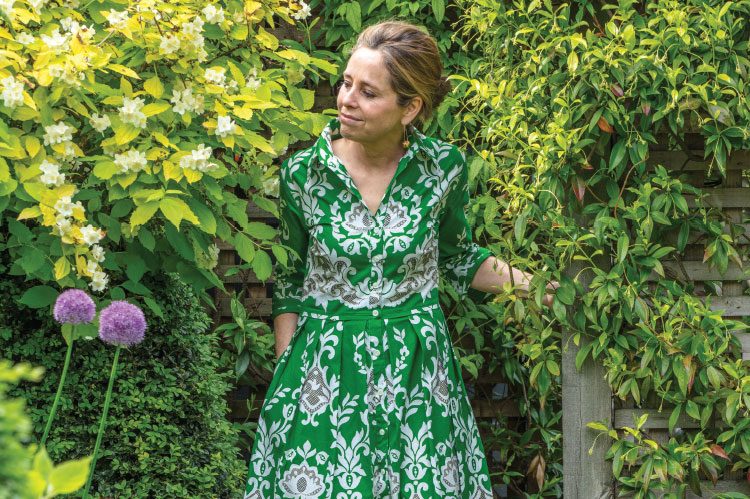
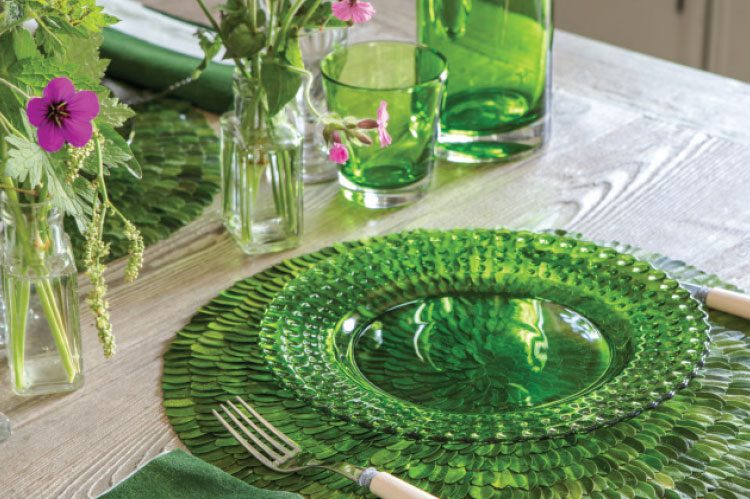

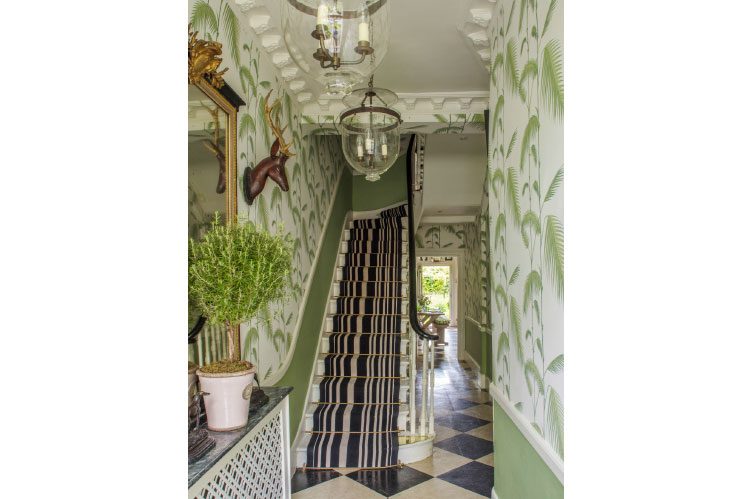
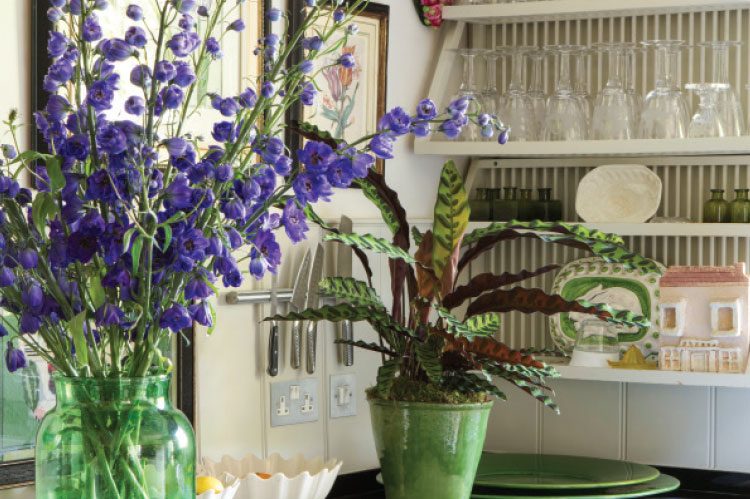
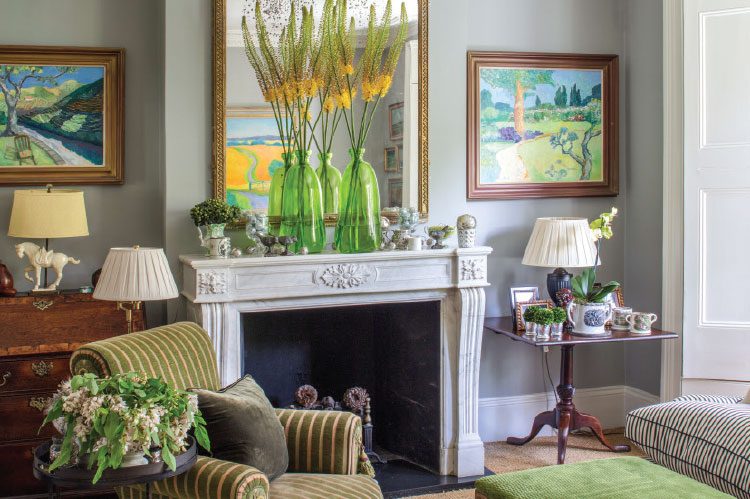
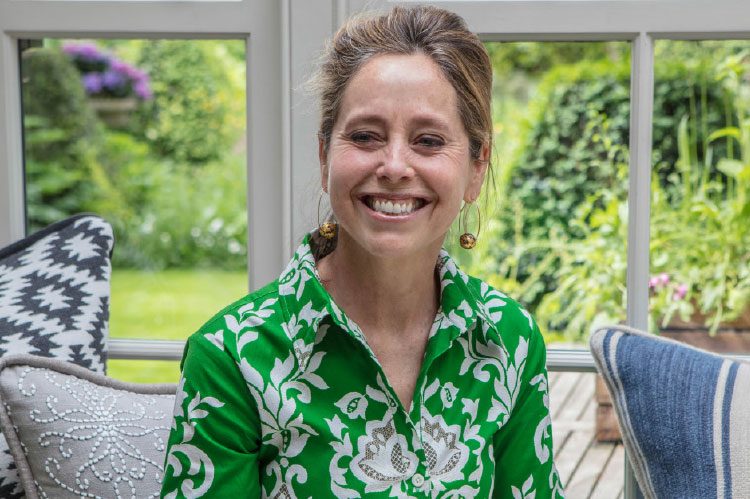
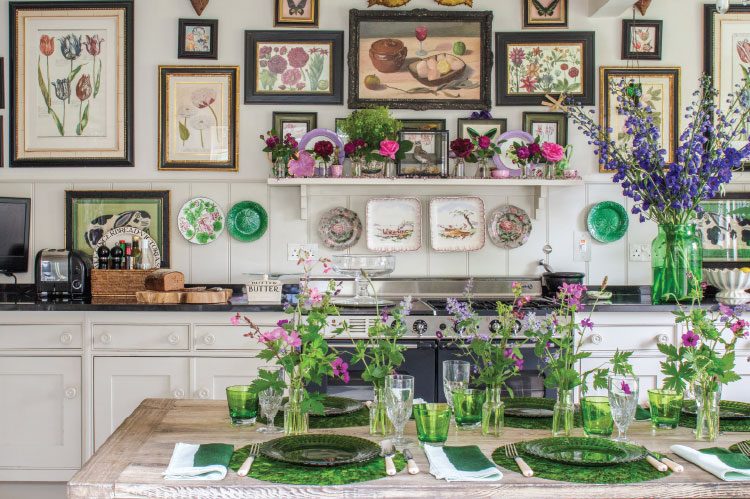
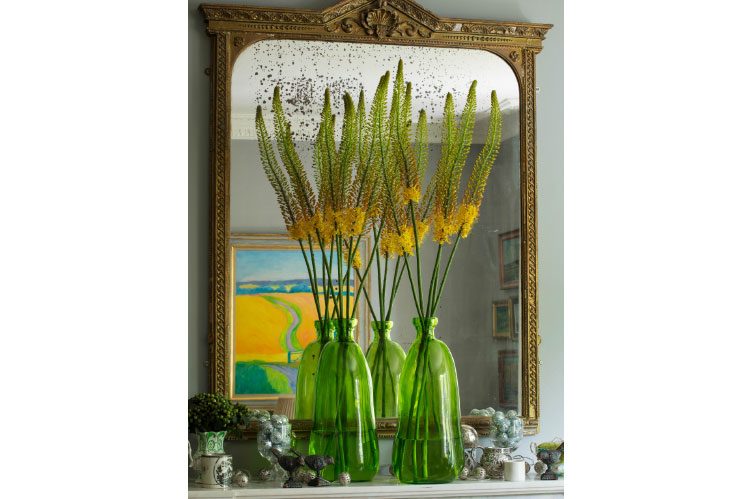

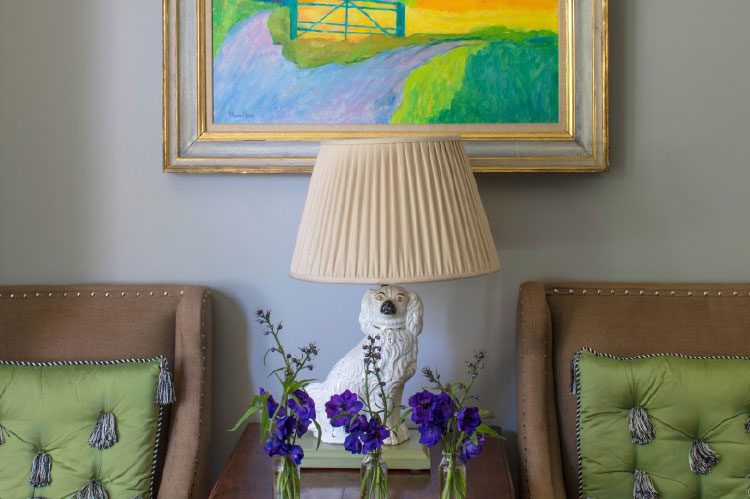
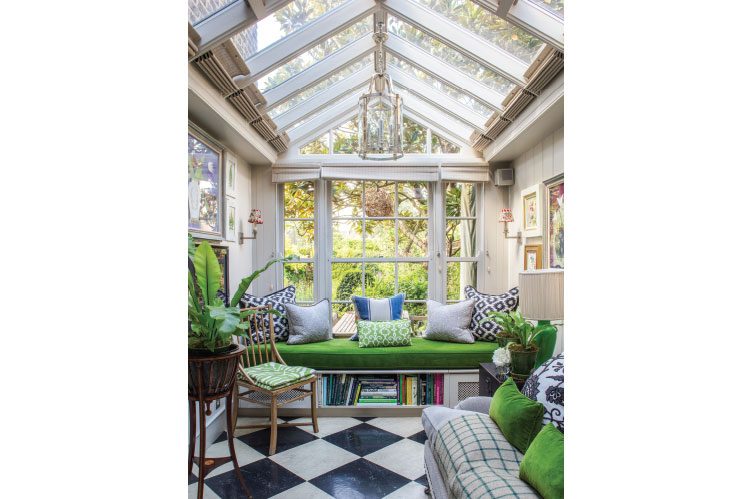
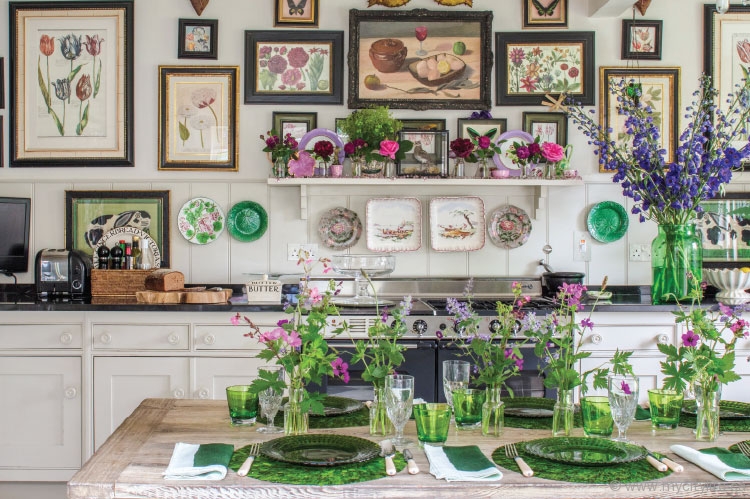


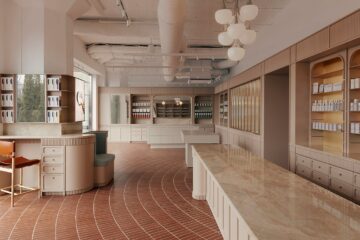
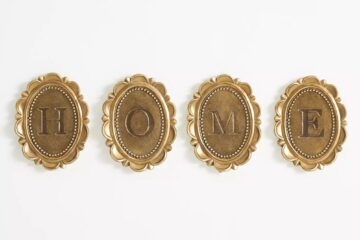


No Comment